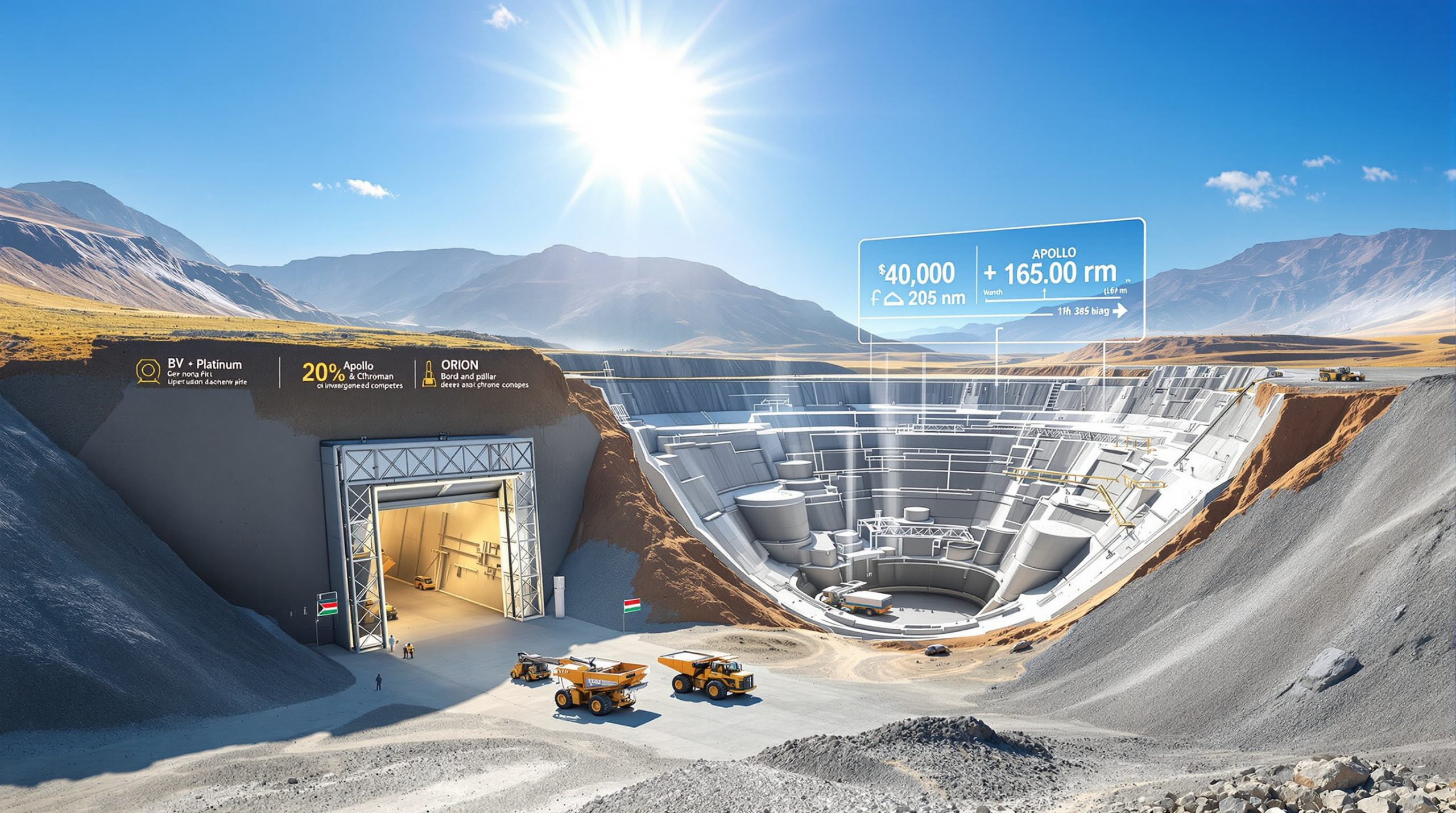What Are Poker Chip Gold Deposits?
Poker chip gold deposits represent a distinctive geological phenomenon where gold-bearing veins are arranged in parallel, stacked layers resembling a rack of poker chips. These unique formations develop when mineral-rich fluids penetrate through fractures in sedimentary rock, creating repeating, disc-shaped ore bodies that differ significantly from traditional linear vein systems.
The visual similarity to stacked poker chips provides geologists with both a memorable description and an accurate representation of their physical structure within host rocks. These deposits feature multiple stacked mineralized zones that each potentially contain substantial gold resources.
In Canada's mining landscape, these specialized formations have become increasingly valuable as mineral exploration insights advance and companies pursue new gold sources in historically productive regions. Their predictable geometry and metallurgical characteristics make them particularly attractive targets for modern mining operations.
How Do Poker Chip Gold Deposits Form?
Poker chip deposits form through a series of complex geological processes that include:
-
Sedimentary rock deformation – Folding and compression of sedimentary layers create systems of parallel fracture planes
-
Hydrothermal fluid circulation – Gold-bearing fluids migrate through these newly formed fractures
-
Mineral precipitation – As fluids cool within the fractures, minerals including quartz, pyrite, and gold precipitate out
-
Sequential development – Multiple episodes of fluid injection create the characteristic stacked pattern
These formations typically occur in metamorphosed sedimentary rocks, particularly in regions where significant tectonic activity has created the necessary structural conditions. The resulting structure resembles a series of flat, disc-shaped mineralized zones stacked vertically.
The gold in these deposits typically associates with pyrite and quartz, allowing for relatively straightforward metallurgical processing using conventional methods. Once identified, the predictable geometry of poker chip deposits enables systematic exploration and efficient mining approaches.
Where Are Canada's Notable Poker Chip Gold Deposits?
Barkerville Gold District, British Columbia
The Barkerville district in east-central British Columbia hosts one of Canada's most significant stacked vein systems. This historic mining region, which produced substantial placer gold during the Cariboo Gold Rush of the 1860s, continues to reveal its potential through modern exploration techniques.
Key characteristics of the Barkerville stacked vein deposits include:
-
Linear mineralized trends extending for kilometers
-
Stacked quartz veins and stockworks within favorable host rocks
-
Gold primarily associated with pyrite mineralization
-
Potential for both high-grade selective mining and bulk tonnage approaches
The district's geology features folded and metamorphosed sedimentary rocks that provided the perfect structural setting for the formation of these distinctive deposits. Modern exploration has identified multiple parallel trends with similar characteristics, suggesting the potential for a much larger mineralized system than previously recognized.
Historic Mining Operations
In the mid-20th century, major mining companies operated several mines in Canada that encountered stacked vein-style mineralization. These operations, active primarily in the 1930s through 1950s, initially targeted high-grade "pencil-like" or tubular ore bodies. However, as mining progressed deeper, miners began noticing the repetitive pattern of quartz veins stacked one after another.
These historic operations provide valuable insights into the nature and potential of stacked vein deposits:
-
The mines often followed high-grade "pipes" that intersected multiple stacked vein layers
-
Each layer represented a discrete mineralized event
-
The overall system demonstrated remarkable continuity along strike
-
The deposits contained both high-grade selective mining targets and bulk tonnage potential
Historical records from these operations have proven invaluable for modern exploration companies seeking to understand and exploit similar geological settings elsewhere in Canada.
Why Are Poker Chip Deposits Economically Significant?
Stacked vein gold deposits offer several economic advantages that make them attractive exploration and mining targets:
Predictable Geometry
The regular, stacked nature of these deposits allows for more systematic exploration and mine planning. Once the pattern is recognized, geologists can predict where additional mineralized zones might occur, both laterally and at depth.
| Characteristic | Advantage |
|---|---|
| Regular spacing | Enables predictive drilling |
| Parallel orientation | Simplifies mine planning |
| Consistent thickness | Aids resource estimation |
| Repetitive nature | Reduces geological uncertainty |
This predictability reduces exploration risk and allows for more efficient resource definition compared to more irregular deposit tiers guide.
Multiple Mining Approaches
Stacked vein deposits often support various mining methods, providing operational flexibility:
-
Selective underground mining targeting higher-grade zones
-
Bulk underground mining incorporating multiple stacked zones
-
Potential open-pit scenarios in near-surface environments
-
Combined approaches that maximize resource recovery
This flexibility allows mining companies to adapt their approach based on economic conditions, potentially starting with higher-grade selective mining before transitioning to bulk methods as infrastructure and cash flow develop.
Processing Advantages
The mineralogy of stacked vein deposits typically offers favorable processing characteristics:
-
Gold commonly associated with pyrite, allowing for effective concentration
-
Potential for gravity recovery of coarse gold components
-
Amenability to conventional flotation techniques
-
Opportunity for ore sorting to upgrade mill feed
These metallurgical advantages can significantly improve project economics by reducing processing costs and increasing overall gold recovery.
How Are Modern Technologies Enhancing Poker Chip Deposit Development?
Recent technological advances have dramatically improved the ability to identify, define, and extract value from stacked vein gold deposits:
Advanced Drilling Techniques
Modern directional drilling allows exploration companies to intersect multiple stacked zones from a single drill pad, reducing environmental impact and exploration costs. This approach enables:
-
More efficient testing of the deposit geometry
-
Better definition of individual mineralized layers
-
Reduced surface disturbance during exploration
-
Lower overall drilling costs per resource ton defined
3D Modeling and Machine Learning
The regular geometry of stacked vein deposits makes them ideal candidates for advanced 3D geological modeling and machine learning applications:
-
Pattern recognition algorithms can identify potential extensions
-
Geostatistical methods better quantify resource confidence
-
Artificial intelligence can optimize drill hole planning
-
Digital twins enable scenario testing before physical development
These technological approaches have transformed the exploration and development process, allowing companies to more quickly and accurately define resources in stacked vein settings.
Ore Sorting Technologies
The distinct mineralogical characteristics of stacked vein deposits make them excellent candidates for advanced ore sorting:
-
X-ray transmission (XRT) sorting can differentiate mineralized material
-
Laser-induced breakdown spectroscopy (LIBS) can identify gold-bearing pyrite
-
Optical sorting can separate quartz-rich material from waste rock
-
Sensor fusion approaches combine multiple technologies for optimal results
By implementing ore sorting early in the processing stream, mining operations can significantly upgrade the material sent to the mill, reducing processing costs and improving overall project economics.
Case Study: The Caribou Gold Project
The Caribou Gold Project in British Columbia represents a modern development of a classic stacked vein gold deposit. This project has progressed from exploration to development, with production anticipated in the coming years.
Project Overview
The Caribou project features:
-
Over 2 million ounces of proven and probable gold reserves
-
Additional measured, indicated, and inferred resources bringing the total gold inventory to approximately 5.5 million ounces
-
A 4-kilometer strike length of defined stacked vein mineralization
-
Potential for expansion along an additional 10+ kilometers of strike
The project's economics demonstrate the robust nature of well-developed stacked vein deposits:
-
Projected average annual production of approximately 190,000 ounces
-
First five-year production estimated at 220,000 ounces annually
-
Competitive all-in sustaining costs around US$1,157 per ounce
-
Initial capital expenditure of approximately US$652 million
Innovative Mining Approach
The Caribou project has implemented several innovative approaches to maximize the value of its stacked vein deposit:
-
Bulk underground mining targeting multiple stacked zones simultaneously
-
Ore sorting technology to upgrade mill feed by removing waste rock
-
Combined gravity and flotation processing to maximize gold recovery
-
Phased development approach to optimize capital efficiency
These innovations have transformed what might have been considered a marginal deposit in previous decades into a robust, long-life gold project with significant upside potential.
Exploration Upside
Perhaps most significantly, the Caribou project demonstrates the exploration potential inherent in stacked vein deposit systems:
-
Current reserves and resources represent only a portion of the identified mineralized trend
-
Similar geological settings extend for kilometers beyond the current resource
-
Deeper extensions of known mineralized zones remain largely untested
-
Parallel trends with similar characteristics have been identified
This exploration upside provides investors and mining companies with the potential for significant resource growth beyond initial development plans.
How Do Poker Chip Deposits Compare to Other Gold Deposit Types?
Stacked vein deposits offer distinct advantages and challenges compared to other common gold deposit types:
| Deposit Type | Advantages | Challenges |
|---|---|---|
| Stacked Vein | Predictable geometry, Amenable to bulk mining, Good metallurgy | Complex drilling requirements, 3D modeling complexity |
| Epithermal Vein | Often high-grade, Near-surface potential | Irregular geometry, Variable metallurgy |
| Porphyry Gold | Large tonnage, Long mine life | Typically lower grade, Higher capital costs |
| Carlin-Type | Large resource potential, Bulk mining suitable | Often refractory, Complex metallurgy |
| Orogenic Lode | High-grade potential, Extensive strike length | Structural complexity, Nugget effect in sampling |
The unique characteristics of stacked vein deposits position them as an attractive intermediate option between high-grade, selective mining scenarios and large-scale, low-grade bulk mining operations.
What Is the Future of Poker Chip Gold Deposits in Canada?
The future of stacked vein gold deposits in Canada appears promising for several reasons:
Underexplored Potential
Many historical mining districts in Canada have never been systematically explored for stacked vein-style mineralization. As geological understanding of these deposits improves, exploration companies are increasingly recognizing their potential in areas previously mined for other deposit types.
Rising Gold Prices
The economic viability of stacked vein deposits improves significantly with higher gold prices. As gold has maintained strong pricing in recent years, previously marginal deposits become economically attractive, especially when modern mining and processing technologies are applied.
ESG Considerations
Stacked vein deposits often allow for efficient underground mining with relatively small surface footprints compared to large open-pit operations. This characteristic aligns well with growing environmental, social, and governance (ESG) considerations in the mining industry, as highlighted in Casino Mining's geological overview.
Technology Integration
Continuing advances in exploration, mining, and processing technologies will further enhance the economic potential of stacked vein deposits:
-
Improved geophysical methods for detecting mineralized zones
-
Automated mining equipment reducing underground operating costs
-
Enhanced processing technologies maximizing recovery and reducing waste
-
Digital integration optimizing the entire mining value chain
These technological advances will continue to improve the economics of stacked vein deposits, potentially transforming previously uneconomic mineralization into viable mining projects.
Conclusion: The Stacked Potential of Canada's Poker Chip Gold Deposits
Stacked vein gold deposits represent a distinctive and economically significant type of poker chip deposit Canadian gold mine. Their unique geometry, formed through complex geological processes, creates stacked, parallel mineralized zones resembling poker chips in a dealer's tray.
These deposits offer several advantages, including predictable geometry, multiple mining approach options, and favorable processing characteristics. Modern technologies have enhanced exploration and development capabilities, making these deposits increasingly attractive targets for mining companies.
The Caribou Gold Project demonstrates the potential of well-developed stacked vein deposits, with robust economics and significant exploration upside. As gold prices remain strong and technology continues to advance, the future of stacked vein gold deposits analysis in Canada appears increasingly promising.
For investors, mining companies, and geologists alike, stacked vein gold deposits represent an exciting opportunity in Canada's mineral landscape—one where the stakes are high, but so too is the potential reward. According to the Western Copper and Gold feasibility study, proper drilling results interpretation is crucial for maximizing the value of these unique geological formations.
Looking for the Next Major Gold Discovery?
Discover potential transformative ASX mining opportunities before the market with Discovery Alert's proprietary Discovery IQ model, delivering real-time alerts on significant mineral discoveries across 30+ commodities. Explore why historic discoveries generate substantial returns by visiting the dedicated discoveries page and start your 30-day free trial today to position yourself ahead of the market.




